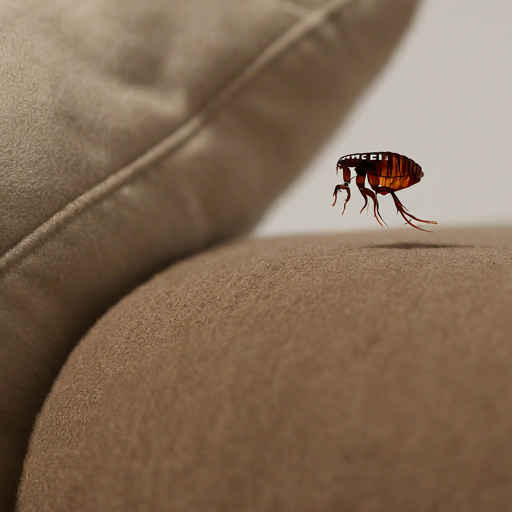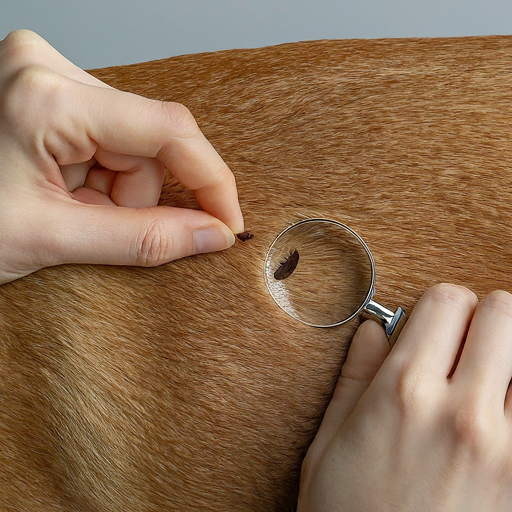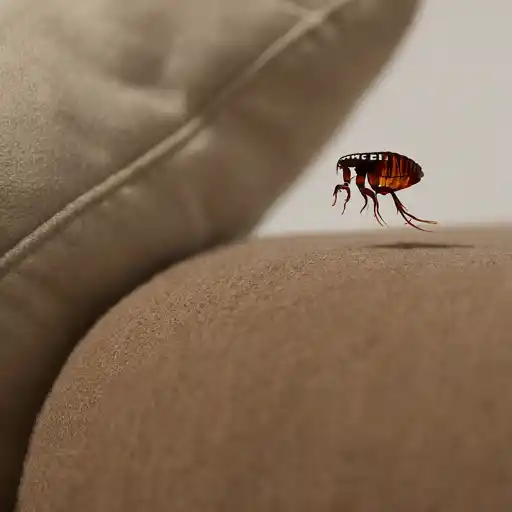Fleas are among the most frustrating pests to deal with, especially when they infest your home and pets. One of the top questions people most often ask is, “Can fleas fly?” Understanding flea behavior is crucial to controlling and preventing these tiny creatures from wreaking havoc. In this guide, we’ll dive deep into flea anatomy, bites, their life cycle, how they move, and the best ways to keep them away from your home and pets.
Can Fleas Fly or Jump?

Known for quickly moving between hosts, fleas can’t fly but they’re great at jumping.
Can Fleas Fly? Understanding Wingless Fleas and Their Jumping Power
Fleas do not have wings, which means they cannot fly. Instead, fleas are wingless insects that rely on their powerful legs to jump great distances. This misconception likely comes from how fast they move between hosts. However, without wings, they cannot fly or glide in the air. Fleas are equipped with strong back legs that allow them to leap up to 150 times their body length.
Can Fleas Fly? How Fleas Jump Between Hosts to Spread Infestations
Though fleas cannot fly, they are exceptional jumpers. This skill helps them navigate between hosts, such as from one pet to another or from animals to humans. Fleas usually jump onto their host, be it a dog, cat, or even a human, when close proximity occurs. Once attached, they feed on the host’s blood and lay eggs, which leads to infestations if not promptly treated.
Can Fleas Fly or Crawl?
While jumping is their primary mode of transportation, fleas can also crawl. Crawling is used mostly by flea larvae, which move through carpets, bedding, and cracks in the floor in search of organic matter to feed on. Adult fleas tend to rely on jumping more than crawling, as it helps them cover more ground and reach hosts quicker.
Can Fleas Fly? A Look at the Life Cycle of Fleas
Understanding the flea life cycle is key to eliminating infestations, as each stage presents a different challenge in controlling them.
The Four Stages of a Flea’s Life
Fleas undergo four stages of development: egg, larva, pupa, and adult. Adult fleas lay eggs on their host, but these eggs often fall into carpets, bedding, or cracks in the floor. Flea larvae hatch from the eggs and feed on organic debris, eventually forming a cocoon in the pupa stage. The adult flea emerges from the cocoon, ready to jump onto a new host to continue the cycle.
How Flea Larvae Develop Without a Host
Flea larvae do not require a host to survive, unlike adult fleas. They live in the environment, feeding on dead skin cells, flea dirt, and other organic materials. Because they don’t rely on a host, flea larvae can thrive in carpets, upholstery, and cracks in the floor. This makes controlling fleas difficult, as larvae can go undetected for weeks until they reach the adult stage.
“Can Fleas Fly? How Adult Fleas Reproduce and Spread Infestations Rapidly
Once adult fleas find a host, they begin feeding immediately and can start laying eggs within 24-48 hours. Female fleas can lay hundreds of eggs in their lifetime, leading to a rapid increase in flea populations if left untreated. Eggs are typically laid on the host but fall off, making areas like pet bedding, carpets, and furniture hotspots for flea infestations.
How Do Fleas Spread in Your Home?
A flea infestation can occur quickly, especially if your pets are regularly exposed to outdoor environments or other animals.
How Do Fleas Infest Pets and Homes?
Fleas can latch onto pets when they roam outside or come into contact with infested animals. Once inside your home, fleas can lay eggs, leading to infestations that spread throughout the house. These eggs and larvae can be found in pet bedding, furniture, and even carpets, making it crucial to treat the entire home when dealing with fleas.

Can Indoor Pets Get Fleas?
Even indoor pets are not safe from fleas. Fleas can enter your home through open windows, other pets, or even on your clothing. While indoor pets are less likely to encounter fleas, they can still become infested, especially if the home is not regularly cleaned or treated for pests.
Signs of a Flea Infestation
- Constant scratching and biting by your pet.
- Finding flea dirt in pet bedding or on their skin.
- Seeing fleas jumping in your home or on your pets.
- Unexplained red bumps or bites on your skin.
How to Prevent Flea Infestations in Your Home
Prevention is key when it comes to fleas. Taking the right steps early on can save you from dealing with a major infestation.
Flea Prevention for Pets
- Regular flea treatments for pets, such as flea collars, topical treatments, or oral medications, can prevent infestations.
- Routine grooming and flea combing help catch fleas before they spread.
Preventing Fleas Indoors
- Vacuum frequently, especially in areas where pets sleep.
- Wash pet bedding and other fabrics regularly.
- Treat carpets and upholstery with flea sprays or powders to kill larvae and adult fleas.
Yard Care and Flea Prevention
- Keep your yard clean and tidy by trimming grass and removing debris where fleas might thrive.
- Consider using yard-specific pest control products to eliminate fleas before they get inside.
What to Do If You Have Fleas
If you’re already dealing with fleas, prompt treatment is essential.
Treating Fleas on Pets
- Bathe pets with flea shampoos or dips to kill adult fleas.
- Apply spot treatments or give oral medications to eliminate existing fleas and prevent new ones.

How to Get Rid of Fleas in Your Home
- Vacuum floors, furniture, and carpets daily to remove flea eggs and larvae.
- Wash all pet bedding, blankets, and any fabrics the fleas could have infested.
- Use insecticides or hire a pest control service for severe infestations.
Natural Remedies vs. Chemical Treatments
While natural treatments like diatomaceous earth or essential oils can be effective, they often take longer to work than chemical treatments. If your infestation is severe, it’s best to use commercial flea control products or consult a professional pest control service.
Professional Solutions vs. DIY
When to Call a Professional Exterminator
If DIY treatments fail to control the flea infestation, it may be time to call a professional. Exterminators have access to stronger pesticides and can treat the entire home to ensure fleas are fully eradicated.
DIY Flea Control Solutions
To tackle fleas at home, start by using store-bought flea sprays and powders alongside your regular vacuuming and washing routines. This combination helps eliminate fleas and their eggs from your living space.
Additionally, you might want to set up flea traps to catch adult fleas that are already in your home. These traps can be effective in reducing the flea population and making your home more comfortable.
Can Fleas Fly? Winning the War Against Fleas
In conclusion, while many people wonder, can fleas fly? the answer is no; fleas cannot fly. However, their exceptional jumping ability allows them to move from host to host with remarkable efficiency. To effectively manage fleas, prevention is essential. Regular grooming, cleaning your home, and using appropriate flea treatments can help keep both pets and families free from infestations. By understanding their behavior and taking proactive measures, you can win the war against fleas and ensure a comfortable living environment.
FAQs About Can Fleas Fly ?
Q1 : Can Fleas Fly?
A1: Fleas are wingless insects, so they can't fly. They move by jumping from one animal to another
Q2 : How Long Do Fleas Live?
A2: Fleas can live anywhere from a few weeks to several months, depending on environmental conditions and access to a host.
Q3 :Do Fleas Only Live on Pets?
A3: No, fleas can also live in your home, hiding in carpets, furniture, and cracks in the floor.
Q4 :How Should I Handle a Flea Infestation?
A4:Immediately treat your pets, clean your home thoroughly, and consider using flea control products or hiring a professional exterminator.
Related Articles
September 30, 2024 by Alex Mitchell
This article provides a comprehensive guide to identifying fleas and understanding their behavior. It covers topics such as flea appearance, life cycle, bites, and prevention methods.

